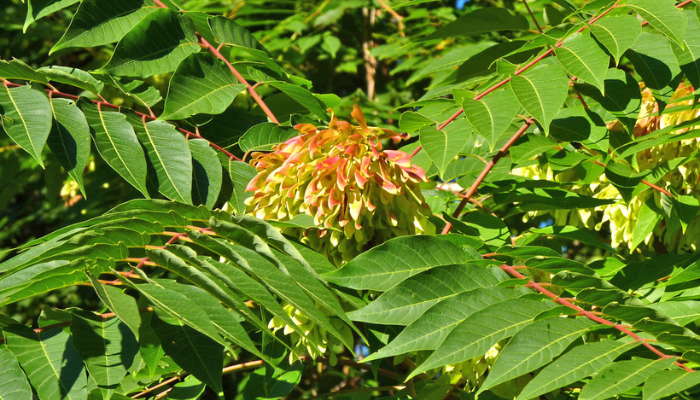IPBES Invasive Alien Species Report
"We are seeing unprecedented increases in the numbers of alien species worldwide.""It's about 200 new alien species every year. And, yes, with those kinds of numbers, we will also see the impacts increasing.""There’s a feeling that invasive species contribution to biodiversity loss is being vastly underestimated. This is an opportunity to really highlight the huge threat that invasive species pose to nature and to people.""The accelerating global economy, intensified and expanded land- and sea-use change, as well as demographic changes are likely to lead to increases in invasive alien species worldwide. Even without the introduction of new alien species, already established alien species will continue to expand their ranges and spread to new countries and regions. Climate change will make the situation even worse."Helen Roy, professor, UK Centre for Ecology and Hydrology, ecologist, entomologist, British Ecological Society member, study leader"Usually the poor communities are the ones that suffer the most.""At the same time, with climate change, you're going to have mosquitoes going higher, you know.""So getting, for example, to New York."Anibal Pauchard, study assessment leader"It is a perfect storm.""It is the intersection of global warming with invasive species that is creating these terrible, terrible, feedbacks."Dawn Bazely, professor of Biology, York University, Toronto
 |
| Black rats are the third most widespread invasive species according to the IPBES report |
The key findings of the report include:
• More than 37,000 alien species have been introduced by many human activities worldwide, of which around 3,500 are harmful
• These invasive species play a key role in 60% of global extinctions of plant and animal extinctions
• They pose a challenge to people in all regions of the world, particularly indigenous peoples and local communities which have greater direct dependence on nature
• The global annual cost to economies has quadrupled every decade since the 1970s, to at least US 423 billion dollars, though the actual figure is likely to be much higher
• 83% of countries do not have national legislation to tackle Invasive alien species and 45% of countries do not invest in the management of biological invasions.Intergovernmental Science-Policy Platform on Biodiversity
According to the conclusions reached by the authors of a new study produced by the Intergovernmental Science-Policy Platform on Biodiversity and Ecosystem Services for the United Nations -- which expands on a wide-sweeping 2019 report produced by the same panel finding up to 1 million plant and animal species at risk of extinction -- invasive non-native species are recognized as a major factor in 60 percent of recorded extinctions of plants and animals.
Over $424 billion in estimated losses to the global economy annually results from thousands of invasive species introduced to new ecosystems globally by harming nature, damaging food systems and threatening human health, according to the scientific report presented on Monday. Since 1970, the costs have quadrupled each decade, based on 2019 data. Of the 37,000 species introduced unintentionally and intentionally by human activity, over 3,500 are considered invasive as a result of the harm they prove in their new ecosystems.
The report represents the most exhaustive view to the present on how invasive non-native species drive biodiversity loss. 86 experts from 49 countries compiled the report, drawing on thousands of scientific studies and contributions from Indigenous people and local communities. The report points out that species have been introduced with intention in view of perceived benefits, and then have spread out of control, a situation, write the researchers, for which solutions must be found.
 |
| Invasive species like this Harlequin Ladybird (Image Credit: PJ Taylor, Pixabay) |
The study cites non-native species that are benign, such as chickens and potatoes, which have been successfully domesticated, playing vital roles in agriculture and food supply. It is unchecked non-native species that become invasive that can severely damage food systems. As an example, the European shore crab invades commercial shellfish beds in New England, while key fisheries in India have been damaged by the introduction of the Caribbean false mussel.
Human health can be directly impacted by invasions when mosquitoes transmitting diseases such as malaria, dengue fever and the Zika virus become invasive world-wide. Ecosystems that have been disturbed may then be incapable of delivering services humans are dependent upon, like the maintenance of fisheries, regulation of rain patterns, and purificiation of drinking water. Ecosystems are made more vulnerable through invasive species reducing the biodiversity that makes them resilient to diseases and other threats.
In over a quarter of the world's islands, invasive non-native species out-number native species. A target set in 2010 for countries to reduce invasions has failed. Almost every country in the world in December of 2023 agreed to protect biodiversity as part of a sweeping agreement to reduce the introduction and establishment of invasive species by at least 50%. The most important way to fight the growing crisis of invasive non-native species, according to the researchers, is to prevent their arrival in new regions -- calling for the assessment of risks prior to moving species, or adopting biosecurity measures that can be quite simple to mount protectively.
 |
| A tree-of-heaven, another widespread invasive species mentioned in the IPBES assessment. |
Labels: Ecology, Invasive Species, Research

0 Comments:
Post a Comment
<< Home